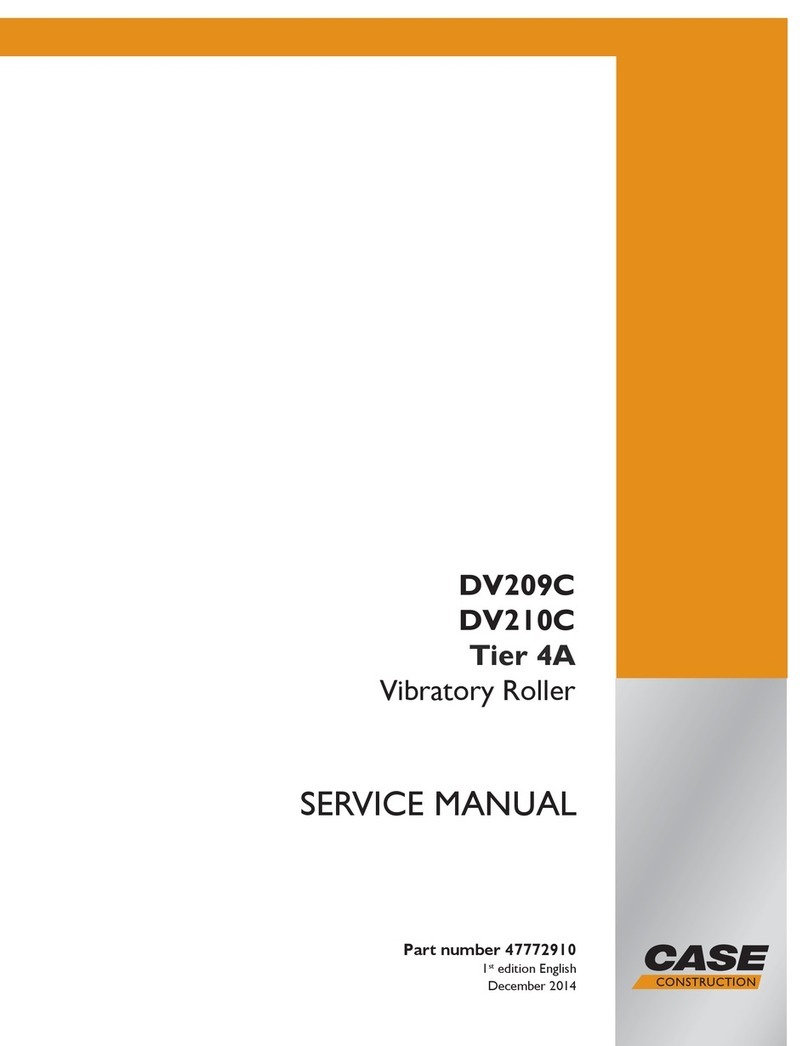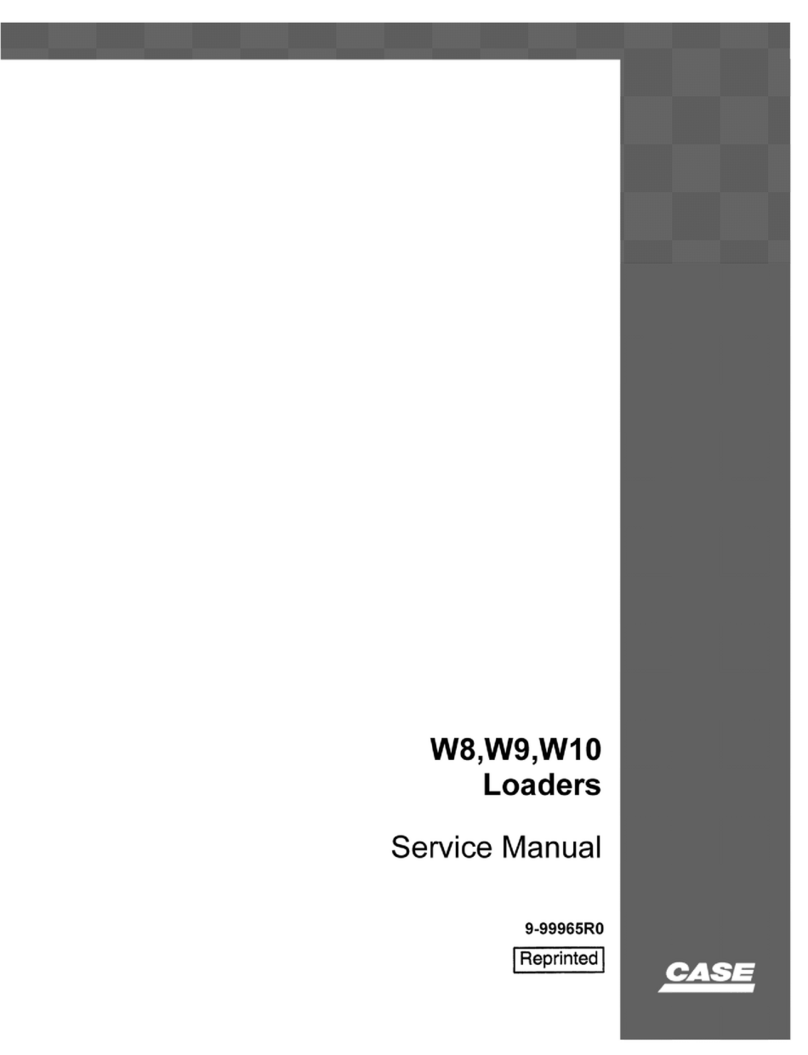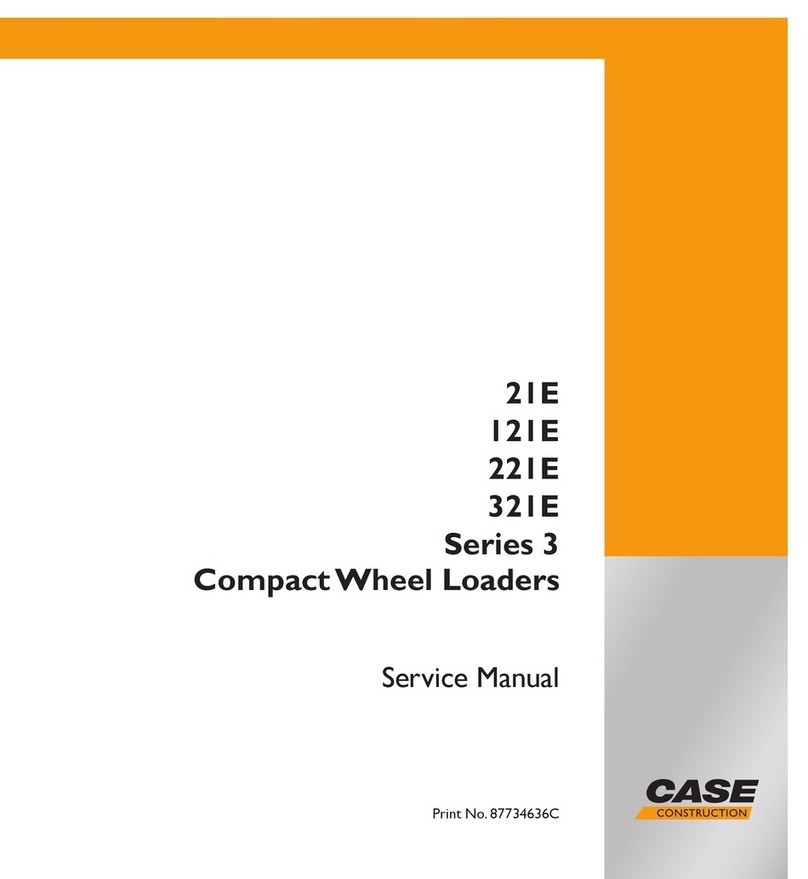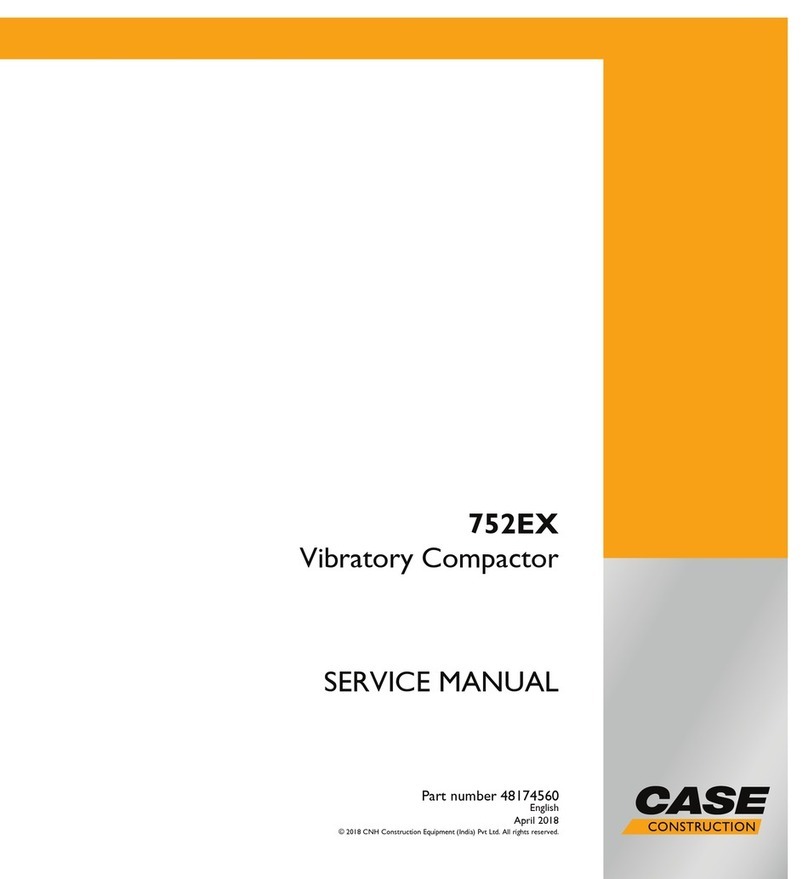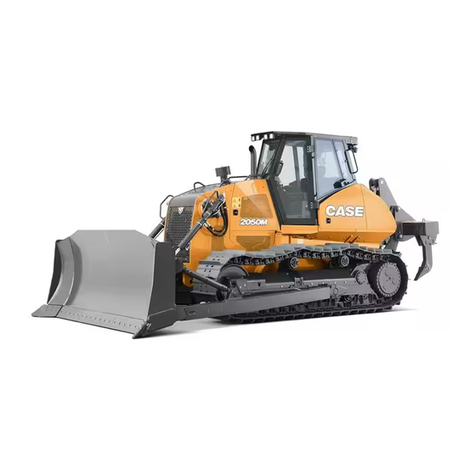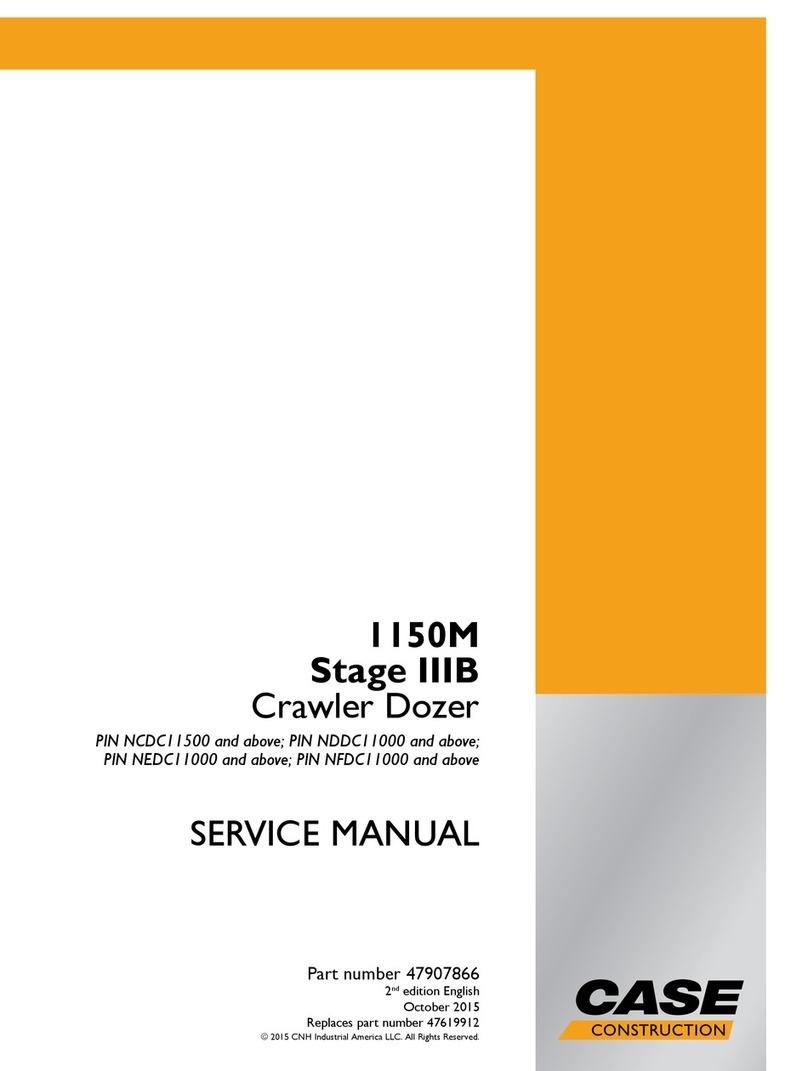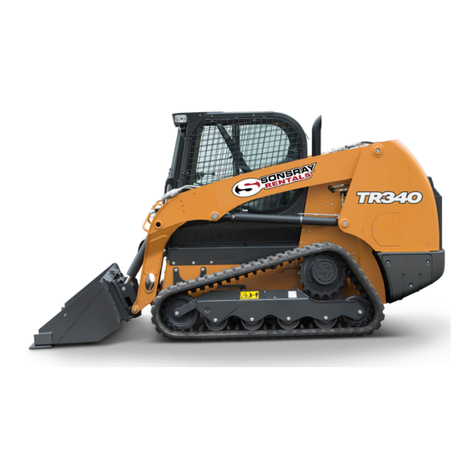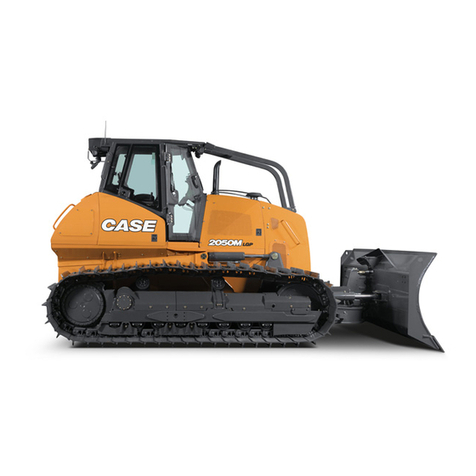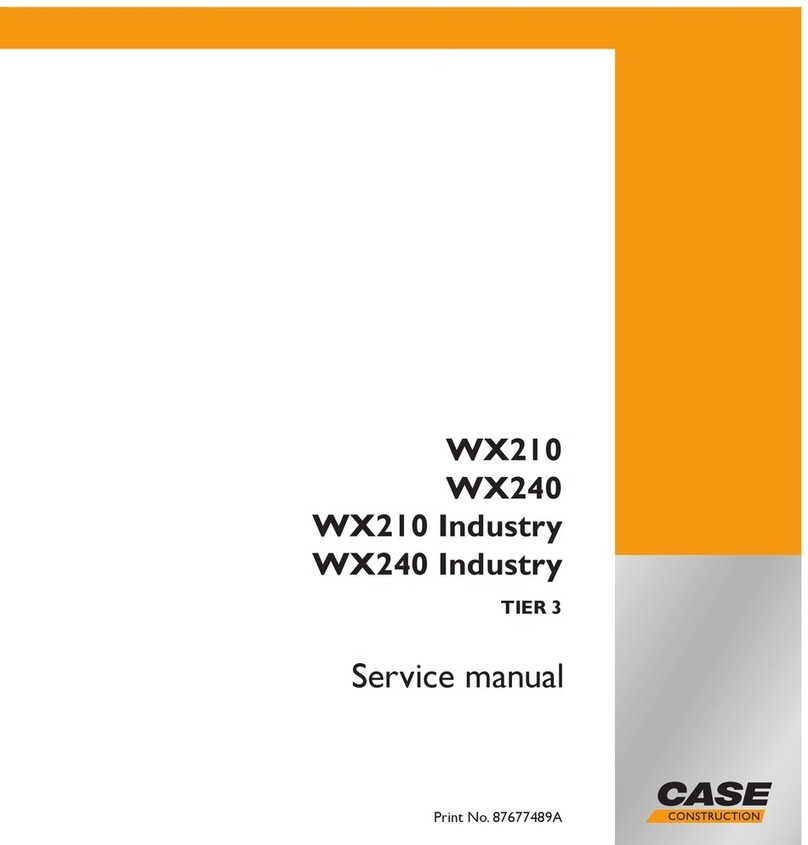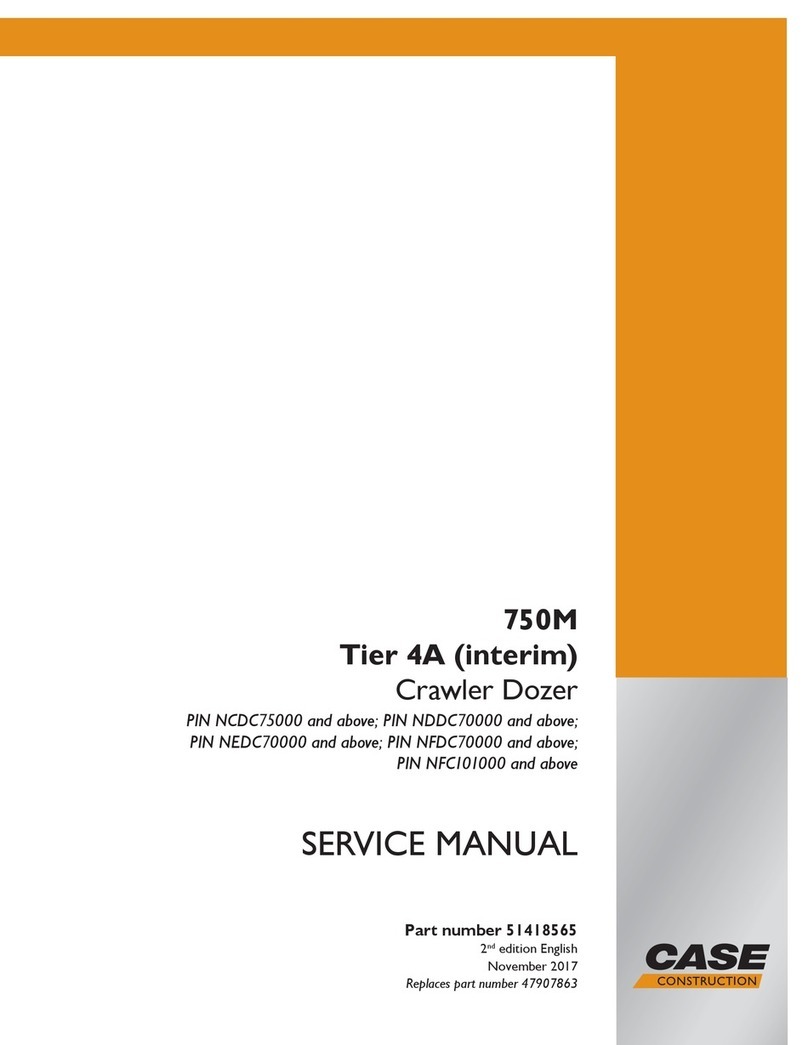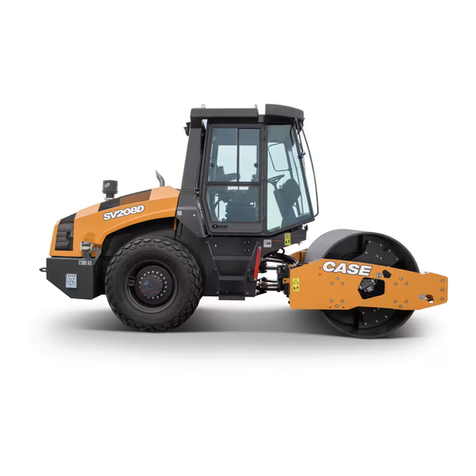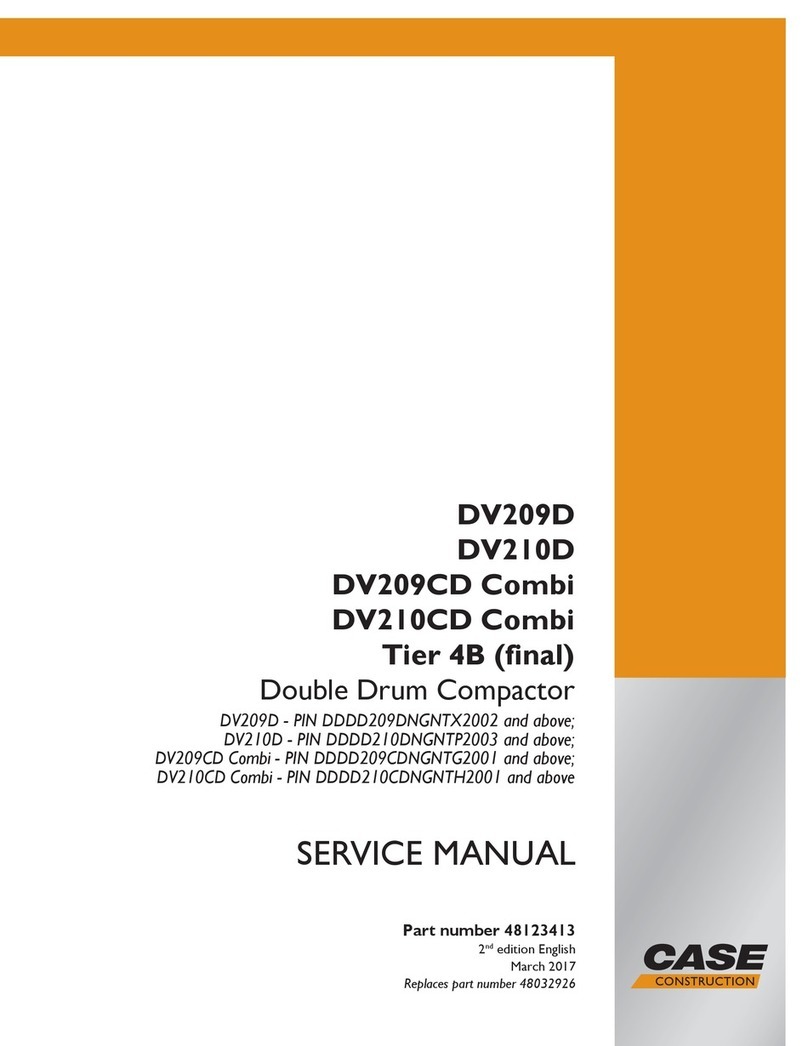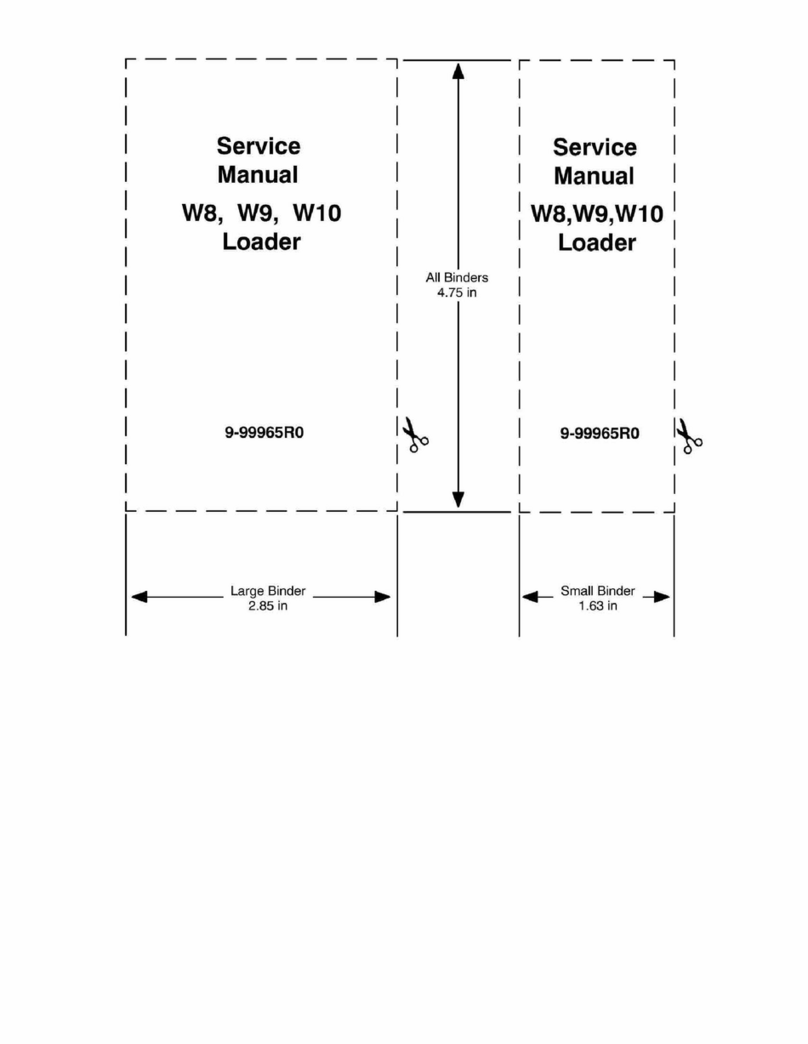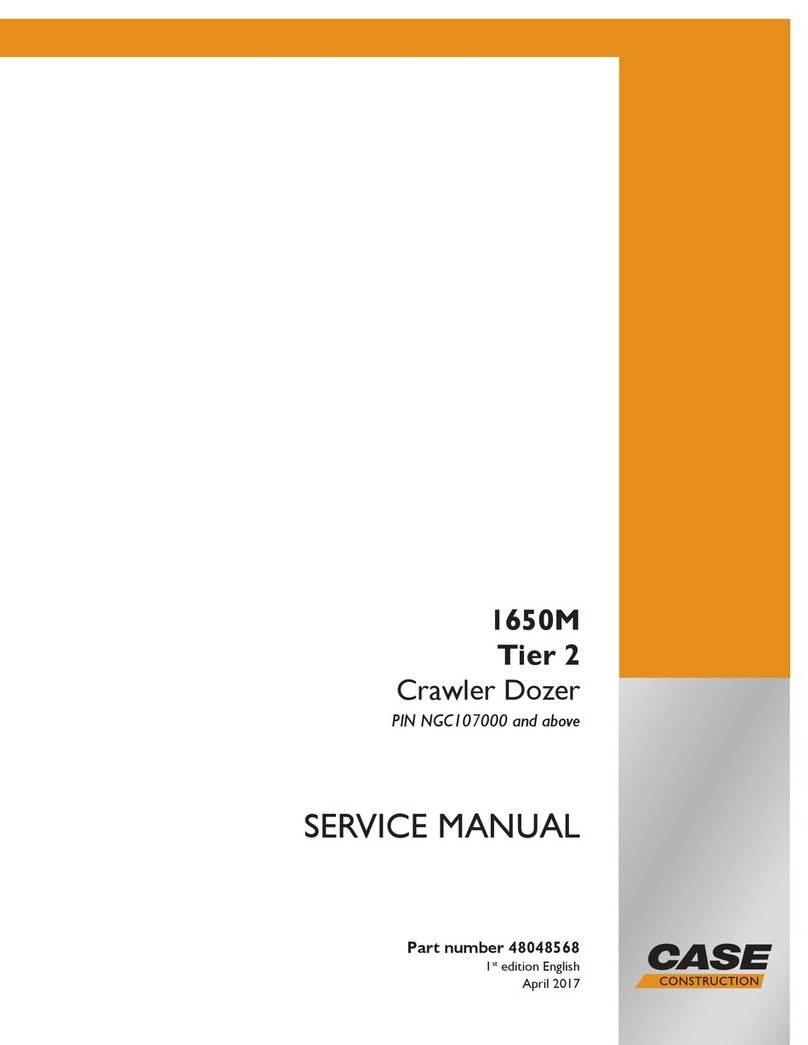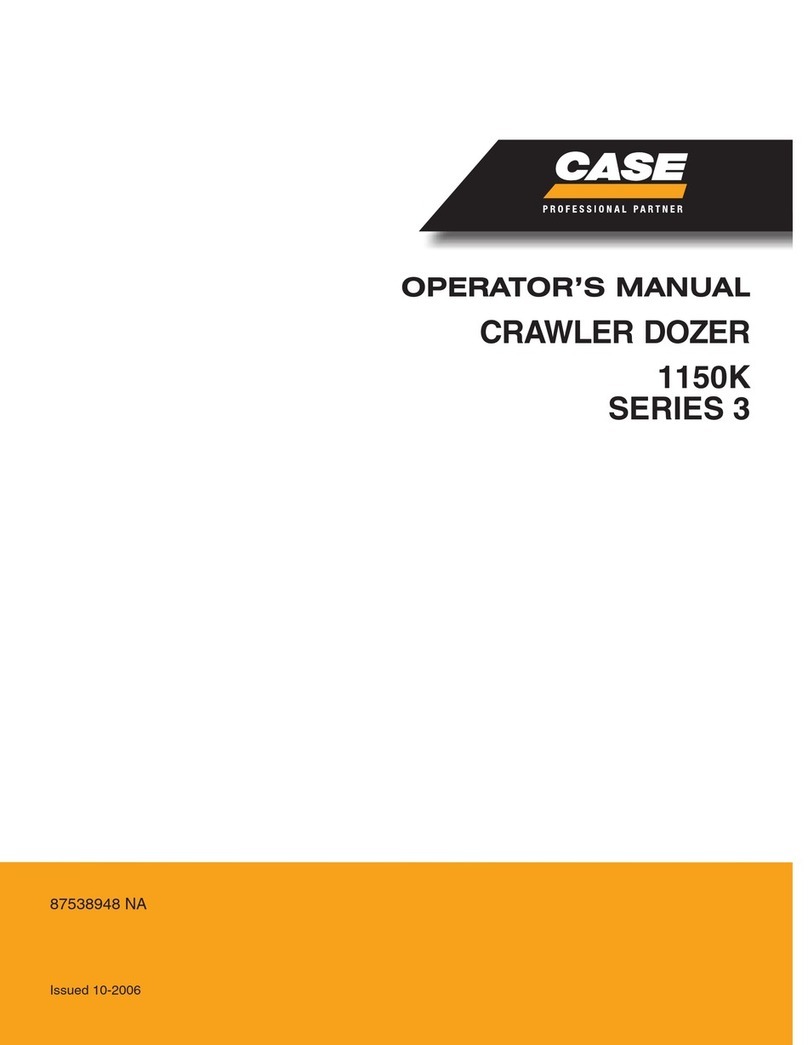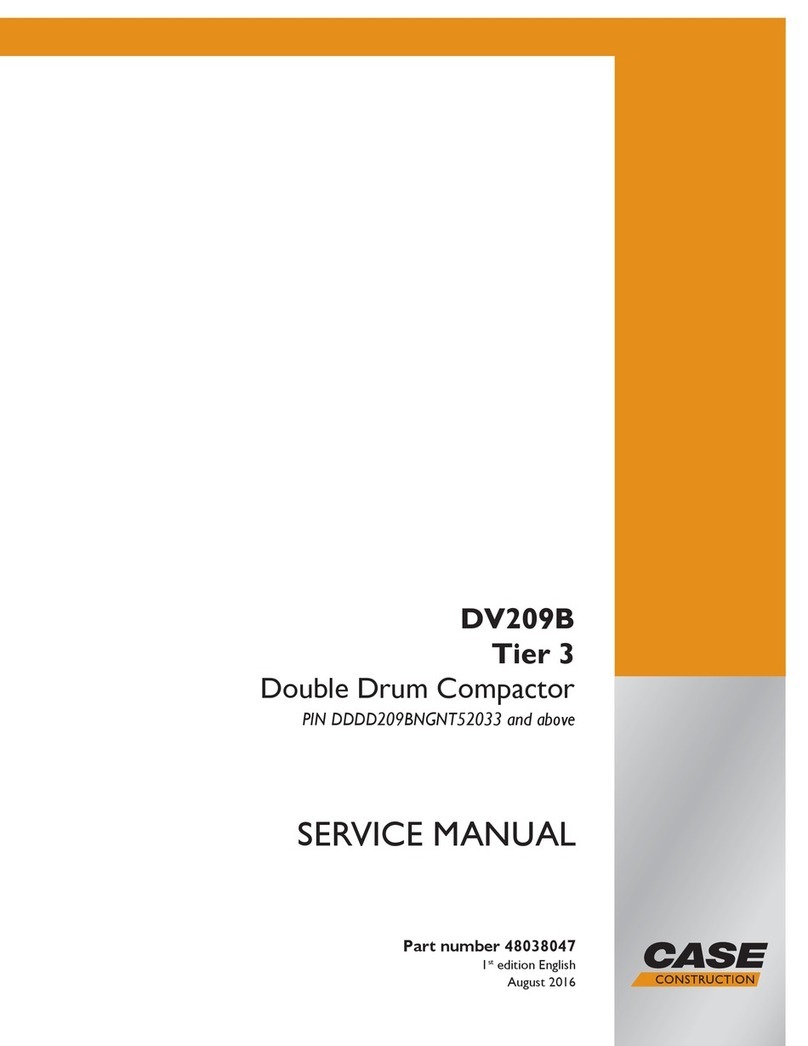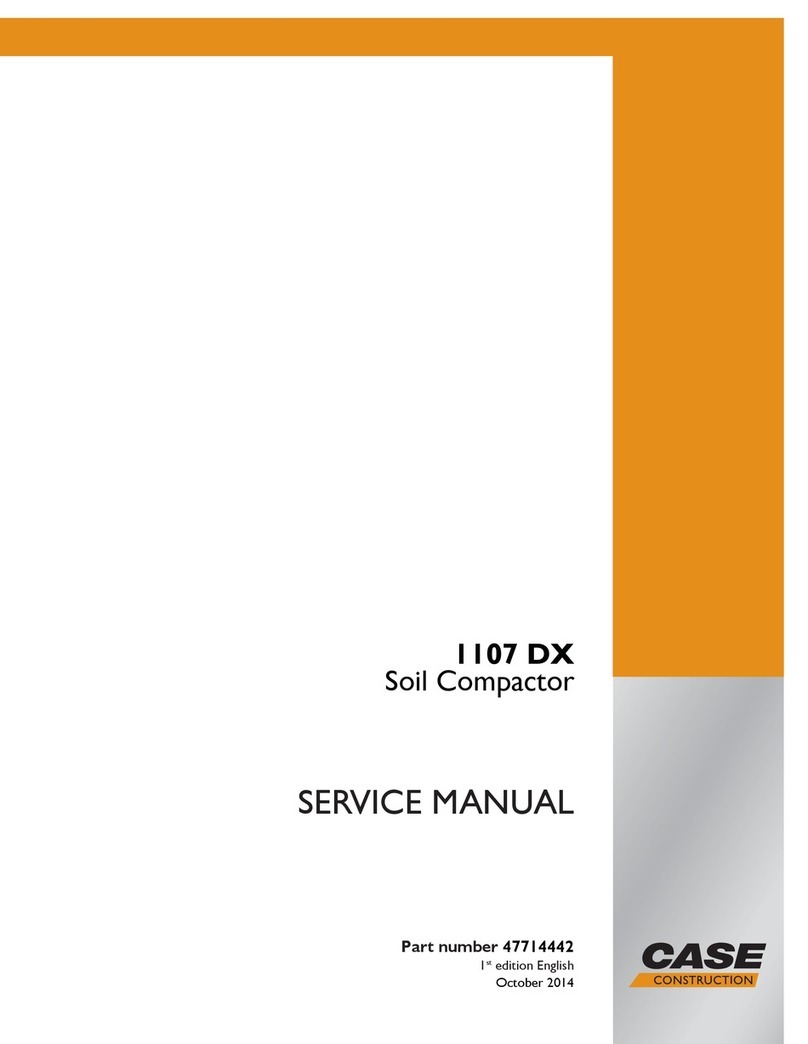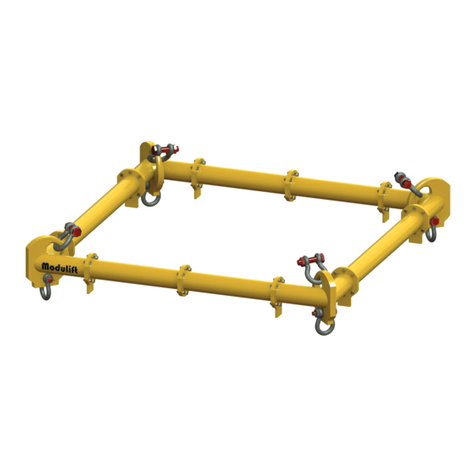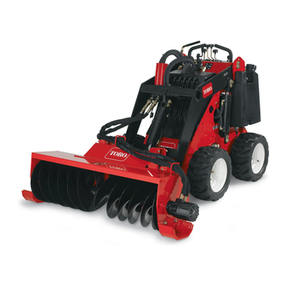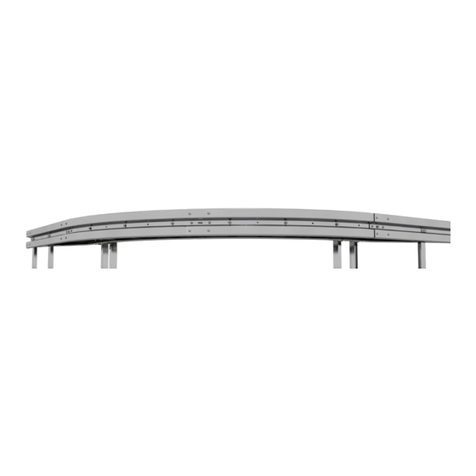
SAFETY RULES
- Be alert of people in the operating area of the machine.
When operating a machine, know what clearances will
be encountered, overhead doors, cables, pipes, bear-
ing load limitations of ground, bridges, floors or ramps.
- When roading, find-out what conditions are likely to be
encountered,clearances,trafficcongestion,typeofroad
surfacing, etc.
Beware of fog, smoke or dust elements that obscure
visibility.
- When crossing gullies or ditches, move at an angle with
reduced speed after ensuring ground conditions will
permit a safe traverse.
- Explore the working area to identify potential risks such
as: slopes, overhangs, pits, demolition rubble, fires,
ravines,ditches,softterrain,heavytraffic,crowdedpark-
ing areas, closed ambients. In such conditions, proceed
with extreme care.
- Whenever possible, avoid going over obstacles such as
rough terrain, rocks, logs highly irregular ground, steps,
ditches, railroad tracks. When obstructions must be
crossed,dosowithextremecareatanangle,ifpossible.
Reduce speed, shift-down.
Ease up to the break over point, pass the balance point
slowly on the obstruction and ease down on the other
side.
- Insteepdown-hilloperation,do notallowenginetoover-
speed. Select proper gear before starting down grade.
- Avoid side hill travel, whenever possible. Drive up and
down the slope. Should the machine slipping sideways,
turn it immediately downhill.
- The grade of slope you should attempt will be limited by
factors such as condition of the ground, load being
handled, type of machine, speed of machine and visibil-
ity.
- Thereisno substitute for goodjudgementwhenworking
on slopes.
- Avoid operating equipment too close to an overhang or
high wall, either above or below the machine. Be on the
look-out for caving edges, falling objects and slides.
Beware of concealment by brush and undergrowth of
these danger.
- When pushing-over trees, the machine must be
equipped with proper overhead guarding. Never allow
a machine to climb up on the root structure particularly
while the tree is being felled.
Useextreme carewhen pushingoveranytreewith dead
branches.
- Avoid brush piles, logs or rocks. NEVER DRIVE OVER
THEM or other surface irregularities that brake traction
withtheground,especiallywhen onslopesorneardrop-
offs.
- Bealerttoavoidchangesintractionconditionsthatcould
cause loss of control. DO NOT DRIVE on ice or frozen
ground conditions when working the machine on steep
slopes or near drop-offs.
- Working in virgin and rough terrains is characterized by
the presence of all the perils and risks listed above. In
these conditions, it is emphasised the danger repre-
sented by large tree limbs (possibly falling on the ma-
chine), large roots (acting as a leverage under the
machine when up-rooted causing the roll-over of the
unit) etc..
STOPPING
- When the machine is stopped for whatever reason,
follow the instructions of chapters “Stopping the ma-
chine”and“Stoppingtheengine”oftheOperationand
Maintenance Instruction Manual.
- Always remember to position the transmission drive
control in neutral and engage the control lock to secure
the machine.
- Set parking brake.
- NEVERLEAVETHEMACHINEUNATTENTEDwiththe
engine running.
- Always before leaving the operator’s seat and after
making sure all people are clear of the machine, slowly
lower the attachments or tools flat to the ground in a
positive ground support position.
- Return the controls in neutral position. Place the gear-
shift lever in neutral and shut-off the engine. Lock the
gearshift lever, switch-off and lock the starter switch.
- Park in a non- operating and no-traffic area or as in-
structed.Parkonfirmlevelgroundifpossible.Wherenot
possible, position machine at a right angle to the slope,
making sure there is no danger of uncontrolled sliding
movements. Set parking brake.
- If parking in traffic lanes cannot be avoided, provide
appropriate flags, barriers, flares and signals as re-
quired. Also provide advance warning signals in the
traffic lane of approaching traffic.
- Keep head, body, limbs, hands and feet away from
blade, arms, bucket or ripper when in raised position.
Always disconnect the master switch before any inter-
vention (i.e. cleaning, repairing, maintaining, refuelling
etc.). Do the same when parking for prolonged periods
of time to avoid accidental or unauthorized starting.
- Never lower attachments or tools other than seated in
operator’s seat. Sound horn. Make sure area near the
attachment is clear. Lower the attachment slowly. DO
NOT USE FLOAT POSITION of hydraulic system.
III
